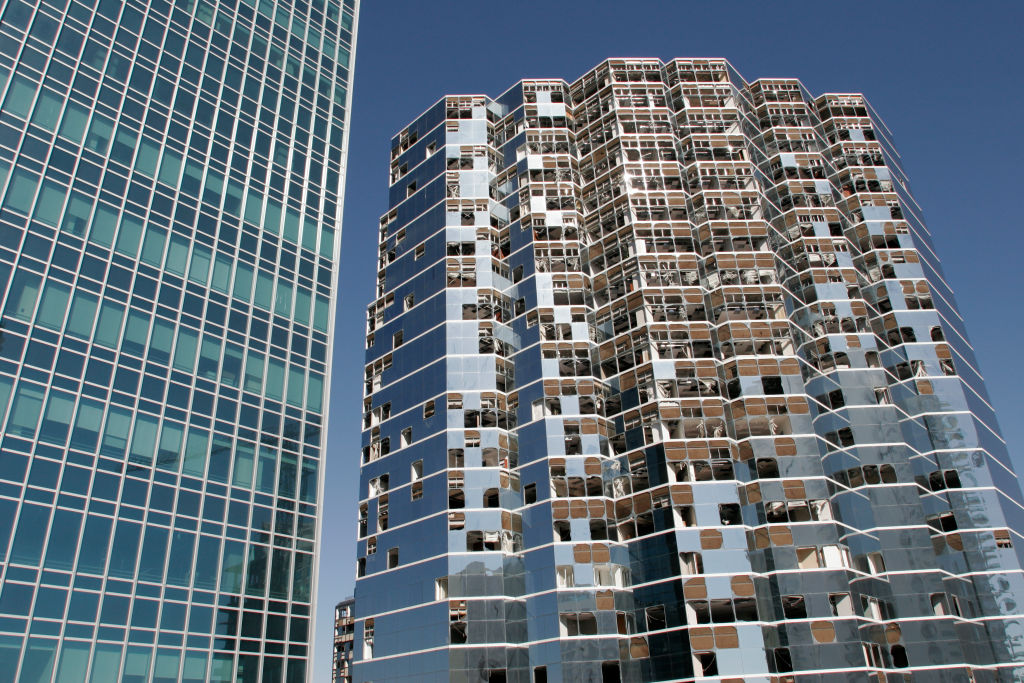
(To get this story in your inbox, subscribe to the TIME CO2 Leadership Report newsletter here.)
It’s hard to escape the sense that the old-fashioned office is in trouble these days as employees continue to work from home and some companies try to shave square footage to cut costs. Unsurprisingly, commercial real estate firms now face declining valuations and financial pressure to turn the situation around. On top of this, it turns out climate change may be playing a meaningful, if admittedly secondary, role further stressing the commercial real estate market.
Insurance costs for commercial real estate are rising rapidly across the country, outpacing rent increases and general inflation. An August Moody’s report suggests a link to climate change. The growth in the cost of insurance for multifamily properties, for example, has tracked closely with the frequency of $1 billion natural disasters in the U.S. And properties in high-risk climate zones, particularly those at risk of hurricanes, face the highest insurance rates.
Take retail properties in Miami, a city at risk of hurricanes. The Moody’s report shows that rent increased at an average rate of 1.4% between 2017 and 2022. The cost of insurance increased by 7.5%. In Denver, where wildfires rage nearby, the cost of retail rent increased by 0.4% annually in the same time frame; the cost of insurance increased by 9%. The numbers are similar in cities across the country.
Read more: Rival Airlines Team Up To Boost Sustainable Aviation Fuel
It’s not just cost that’s concerning. Some commercial real estate companies are finding it hard to purchase sufficient insurance at acceptable terms. That means properties are left without enough insurance to fully cover the damage caused by a range of increasingly likely climate-related extreme weather events. The market is just beginning to process what that means. In the short term, it means that property investors and lenders take on additional risk that would have once been covered by insurance. How that will reshape commercial real estate as we experience more extreme weather in the coming years remains to be seen.
“It's an increasingly challenging conversation because we understand there are these areas that have repeated hazards,” says Natalie Ambrosio Preudhomme, who researches the commercial real estate market for Moody’s. “And there are long-term implications for the viability of these markets and the communities that are driven by them.”
This topic has yet to enter mainstream conversation around climate and insurance, but it has been a point of discussion behind the scenes at commercial real estate industry gatherings. And potential insurance issues have shown up in regulatory filings, too. Vornado Realty Trust, a significant player in the New York City real estate market, warned this year, for example, that climate change may affect its business “by increasing the cost of (or making unavailable) property insurance on terms we find acceptable.” Other large commercial landlords, like Boston Properties and Highwood Properties, to name a couple, made similar statements.
There are ways to get ahead of such challenges. Property owners can harden their assets—think of improving drainage to prevent flooding or installing a new roof—to make them more resilient to climate-linked events, for example. Some experts are calling for insurers and regulatory bodies to offer financial incentives to make that happen faster.
Read more: Extreme Heat Is Hitting Companies Where It Hurts
I find the evolving story of commercial real estate insurance to exemplify how climate change permeates into surprising places. National security experts have long-called climate change a “threat multiplier” that exacerbates existing threats. (Think of drought making regimes in the Middle East less stable, or the melting Arctic heightening conflict between superpowers).
Climate change can also pose a subtle but significant threat to companies and investors. While climate change may not be the primary cause of an industry or company’s woes, it can make existing problems a whole lot worse. Understanding these connections—and getting ahead of them—will benefit the bottom line.
More Must-Reads from TIME
- Breaking Down the 2024 Election Calendar
- How Nayib Bukele’s ‘Iron Fist’ Has Transformed El Salvador
- What if Ultra-Processed Foods Aren’t as Bad as You Think?
- How Ukraine Beat Russia in the Battle of the Black Sea
- Long COVID Looks Different in Kids
- How Project 2025 Would Jeopardize Americans’ Health
- What a $129 Frying Pan Says About America’s Eating Habits
- The 32 Most Anticipated Books of Fall 2024
Write to Justin Worland at justin.worland@time.com